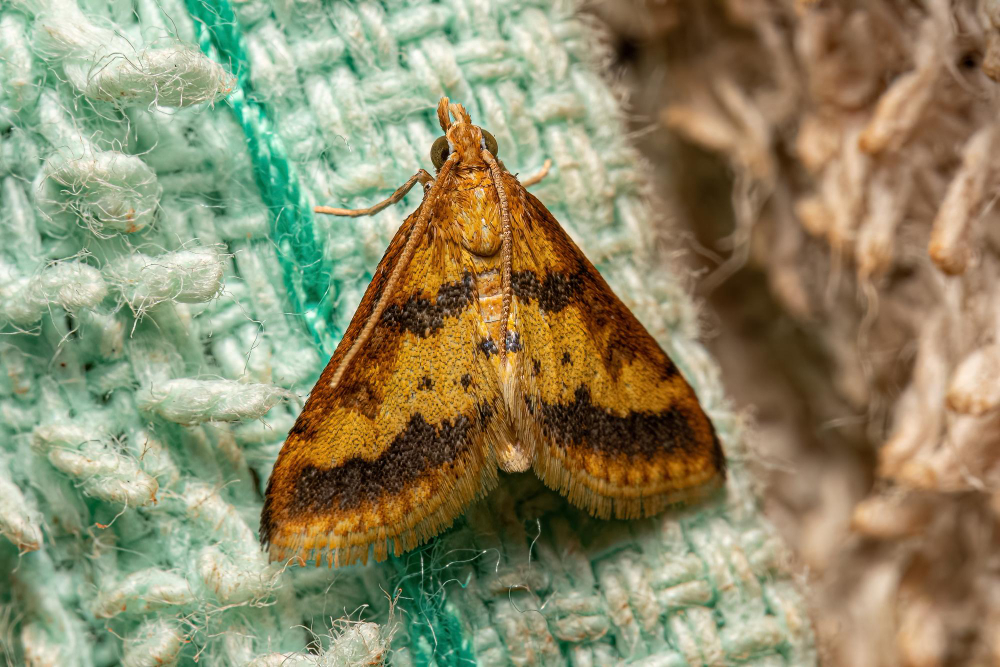Moths – those seemingly innocent fluttering creatures that often get associated with cozy nights and soft lighting. But don’t be fooled by their delicate appearance; some moths harbor a secret destructive habit that can wreak havoc on your wardrobe. Yes, you heard it right – moths can eat clothes! But why do these tiny insects have such a voracious appetite for our beloved garments? Let’s delve into the fascinating world of moths and uncover the reasons behind their curious penchant for devouring fabrics.
Meet the Clothes Moth
First things first, let’s identify the primary culprit behind the munching mayhem – the clothes moth. Also known as Tineola bisselliella, these tiny insects are the bane of many a wardrobe enthusiast. Unlike their more well-known counterparts, the common house moth, clothes moths have a particular fondness for natural fibers like wool, silk, and cashmere, making them the ultimate enemy of luxury garments and heirloom textiles.
Feasting on Protein
So, what exactly attracts clothes moths to our precious fabrics? The answer lies in their dietary preferences. Unlike other insects that feed on plant-based materials, clothes moths have evolved to specialize in consuming animal-based proteins found in natural fibers. Wool, in particular, contains keratin – a protein that serves as the main component of hair and fur in animals – making it an irresistible feast for hungry clothes moths.
Moisture and Darkness
While clothes moths have a taste for protein-rich fabrics, they also have specific environmental preferences that make our closets the ideal dining spot. These pests thrive in dark, humid environments, making closets, drawers, and storage spaces prime real estate for infestations. Add to that a collection of rarely worn, undisturbed garments, and you’ve got yourself a moth buffet waiting to happen.
Larvae in Disguise
Now, here’s where things get a little creepy – clothes moths don’t actually eat your clothes themselves. Instead, it’s their larvae that do the dirty work. Female clothes moths lay their eggs on or near fabrics, and once hatched, the larvae emerge hungry and ready to devour. These tiny caterpillar-like creatures tunnel through fabrics, leaving behind telltale signs of their presence in the form of irregular holes and damage.
Summer Lovin’ for Moths
While clothes moths can be a nuisance year-round, they tend to be more active during the warmer months. As temperatures rise and humidity levels increase, moth populations surge, leading to an uptick in fabric damage. Summer heatwaves combined with poor ventilation in closets can create the perfect storm for moth infestations, leaving many unsuspecting victims with moth-eaten garments come fall.
Warding Off Moth Munchers
Now that we’ve uncovered the reasons behind moth-induced fabric feasting, it’s time to take action to protect our beloved garments. Prevention is key when it comes to keeping clothes moths at bay. Start by regularly airing out your closets and storage spaces to reduce humidity levels and create a less hospitable environment for moths. Invest in breathable garment bags or storage containers to protect vulnerable items, and consider using moth repellents or sachets containing natural deterrents like cedar or lavender to ward off unwanted pests.
Dealing with Moth Infestations
Despite our best efforts, sometimes moths still manage to infiltrate our wardrobes. If you suspect a moth infestation, act quickly to contain the damage and prevent further spread. Inspect your garments for signs of moth activity, paying close attention to areas with natural fibers like wool and silk. Vacuum your closets and drawers thoroughly to remove any eggs, larvae, or adult moths, and consider laundering or dry cleaning infested items to eliminate pests and their eggs.
Protecting Our Precious Garments
In conclusion, while moths may seem like harmless fluttering creatures, their penchant for protein-rich fabrics can wreak havoc on our wardrobes if left unchecked. By understanding the reasons behind moth behavior and taking proactive measures to prevent infestations, we can protect our precious garments and keep them moth-free for years to come. So, next time you catch sight of a clothes moth flitting about, remember to keep a watchful eye on your wardrobe – those pesky pests might be up to no good!

